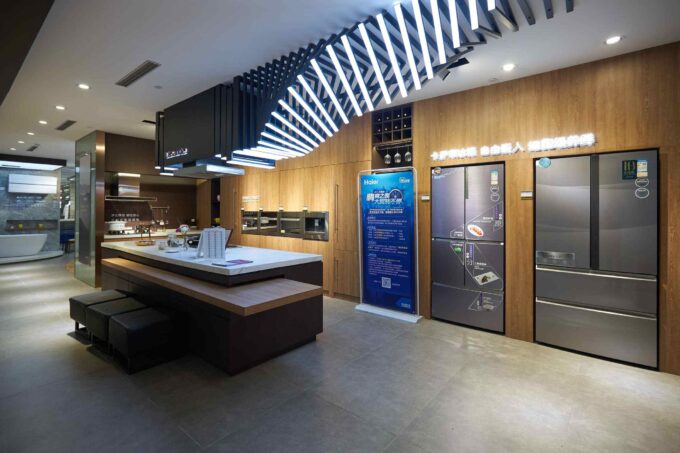Ecosystem ‘micro-communities’ drive innovation
A key component of Haier’s model is its unified platform, through which it provides strong support for micro-enterprises. Zhou explains, “Micro-enterprises are not only able to start their own businesses on the platform but also enjoy the unified, synergistic support of the Group.” This platform solves a critical challenge: balancing the independent innovation of these enterprises with the overall strategy of the Group.
Haier has recently evolved its model further with the development of “ecosystem micro-communities” (EMC). These are networks of micro-enterprises, both internal and external to Haier, that come together to address specific sets of user needs. This new way of sharing value also shifts the focus from “post-event value-sharing” to “mid-event adjustment”. It sets up a fairer system for dividing profits, which encourages all partners to work together in creating long-term value.
Zhou details three key aspects of this approach. First, clear innovation guidelines. “All enterprises on the platform are closely centered on the Group’s clearly defined core tracks – Smart Home, Healthcare, and Industrial Internet – and together they are driving Haier’s sustainable development,” he explains. Second, a complex network of supply relationships. “Through an innovative mechanism, Haier quantifies and assigns corporate assets to each enterprise and allows them to possess and use these assets for a fee. When the team creates excess value – over and above agreed targets – they can distribute it on their own,” he says. Third, a value-added sharing mechanism. “This has greatly stimulated the innovation spirit and sense of ownership of employees,” he notes. “Haier allows more employees to participate in innovation and share the results.”
In 2019, for example, Haier formed an EMC between its refrigerator sales micro-enterprise in Zhengzhou and its refrigerator manufacturing micro-enterprise in Hefei. The two units agreed on a shared goal of delivering high-quality products on time, which they called the “zero-defect and zero-delay” product.
An incentive mechanism tied rewards to profit increases, with the joint unit receiving a value share of 140,000 RMB for a 20% profit increase and 230,000 RMB for a 30% increase. The team achieved the 30% goal, demonstrating the power of this collaborative approach.





 Audio available
Audio available